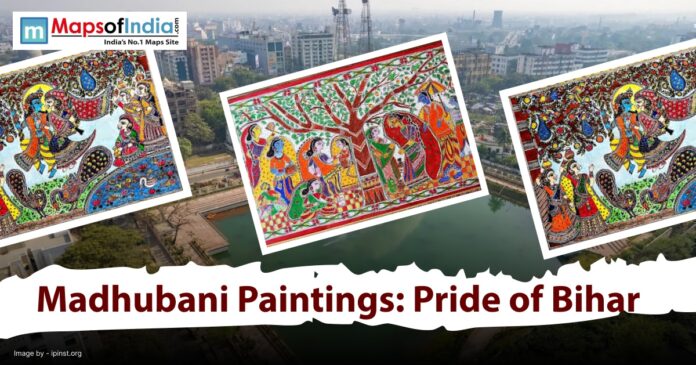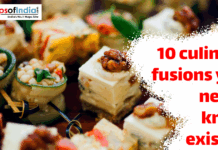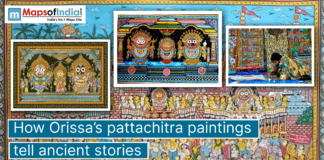Madhubani paintings, the prideful art of Bihar, are a vibrant art form. This art form is from Bihar’s Mithila region. It is also known as Mithila art. This art form tells stories of culture and tradition. The use of bold colours and intricate patterns defines them. This art form is rooted in history, which adorns walls and canvases. In recent years, they have become a global symbol of India’s heritage. From village homes to art galleries, Madhubani paintings are charming and enduring.
Origins Rooted in Mythology
The art of Madhubani painting dates back centuries. We can find its roots in the time of the Ramayana. According to ancient stories, King Janak is said to have commissioned these paintings for Sita’s wedding. Women in Mithila painted walls and floors. It is believed that these artworks bless homes. According to a recent Sahapedia report, it traces its roots to the 7th century BC. This art form was passed down through generations. Originally, to paint, they used natural dyes. Rice paste and bamboo sticks were tools used for painting. This art was famously used for rituals and festivals. It reflected devotion and community. Today, these paintings carry that ancient spirit. Its mythological origins inspire awe.
Distinct Styles of Madhubani
Madhubani has five unique styles of painting. The first one is Bharni, which uses bold and filled colours. The Kachni style focuses on fine lines and shading. In the Tantrik style, they depict spiritual themes like deities. Godna style is used to mimic tribal tattoos with patterns. Kohbar is used in celebrations like weddings with fertility symbols. An Artisera article details their diversity. Each style tells its own unique story. It’s like Bharni is vibrant for festivals. On the other hand, Kachni’s precision suits modern canvases. As per the occupation, artists choose the styles they want to paint in. Villages like Ranti and Jitwarpur specialise in them. This variety in things sets Madhubani apart. This is a versatile art form.
Materials and Techniques
The traditional Madhubani painting style uses natural materials to paint. Dyes used in it come from plants and minerals. Turmeric is used as a yellow colour, and Indigo is used for blue. The black colour is taken from Soot. To paint, artists use twigs, fingers, or nib pens. Rice pastes are used to add texture. These paintings are done on mud walls or cloth. Modern artists who follow this art form use paper and acrylics. Intricate lines define patterns. Sketches are not made first. This is a free-flowing art form. This art form was once dominated by Women. Now men also paint. The traditional techniques used in it preserve its authenticity. This connects the past to the present.
Cultural and Social Significance
Madhubani paintings reflect the soul of Mithila. These paintings capture daily life and spirituality. From these paintings, stories of gods like Krishna and Durga are depicted. The Nature scenes show birds and fish. According to a recent Indian Express article, they adorn homes during Diwali and weddings. Women painted to get blessings. This art form has empowered many communities in Bihar. This also gave voice to the women. Dalit artists are also shining in this form, breaking caste barriers. Festivals like Madhubani Utsav celebrate these changes. The art fosters pride. This is a cultural anchor for Bihar. These stories of Madhubani unite generations.
Global Recognition and Evolution
Madhubani paintings have achieved global recognition. Droughts that happened in the 1960s pushed artists to use paper. This made this art form portable. UNESCO recognised its importance as an intangible heritage in 2018. Galleries in London and New York started to display these paintings. Artists like Baua Devi received Padma Shri awards from the indian government. In recent times, these works appear on sarees and bags. A Vogue India piece in 2025 showcases Madhubani fashion. E-commerce platforms are selling these prints at high prices. Social media made it possible to reach people around the globe. This art form is evolving while staying rooted.
Women’s Empowerment Through Art
Madhubani is a women-led traditional art form. This art was created by village women for rituals. This gave them creative freedom. A Feminism in India report celebrates this art form for this. Artists like Sita Devi gained global fame. Women were able to earn income for their families. Self-help groups are now training women to learn this. Organisations like SEWA support them. According to a recent The Hindu article, it notes 10000 women artists in Mithila who can do madhubani paintings. They sell their handmade product globally via e-commerce platforms. This gave women economic independence. Madhubani empowered women across generations. It’s a symbol of resilience and creativity.
Challenges and Preservation Efforts
Madhubani also faced challenges that traditional art faces in modern times. Commercialisation of this art risks diluting authenticity. Cheap imitations are available in markets. Young artists are looking toward trends over following traditional art forms. Natural dyes are replaced by synthetic colours. Rural artisans don’t have access to global customers. Efforts for the preservation of this art form are rising. The Mithila Art Institute trains youth. Government schemes are now funding local workshops. It also got GI tag protection. There are also Museums in Patna that showcase original artworks. These steps ensure longevity. Madhubani’s essence must stay intact.
Economic Impact and Future Prospects
The art of Madhubani is one of the important reasons behind the surge in Bihar’s economy. This business employs thousands of locals, with most workers being women. According to the Economic Times report, this has over $10 million in revenue from exports. Handicraft fairs boost their sale. Events like Dilli Haat feature stalls. Online platforms expand reach. Tourism in Mithila has grown. Tourists are exploring artists’ villages. Future prospects of this art are bright. Sustainability is key to a bright future. Using eco-friendly dyes helps to preserve heritage. Madhubani’s global demand will rise. It’s a cultural and economic gem.
Conclusion
Madhubani paintings have become the pride of Bihar. It started in Mithila, where they weave mythology and life. This paintings have five different styles like Bharni and Kohbar dazzle. Use of natural dyes and twigs creates magic. This art empowers women and boosts their economic condition. Global galleries are embracing their vibrancy. There are still some challenges exist like commercialisation looming. Yet preservation efforts make it thrive. From small village walls to global fashion runways, it has captivated everyone. Its intricate patterns tell timeless stories of our mythology. This art is Bihar’s heartbeat. Madhubani is more than just an art, it’s a legacy.





